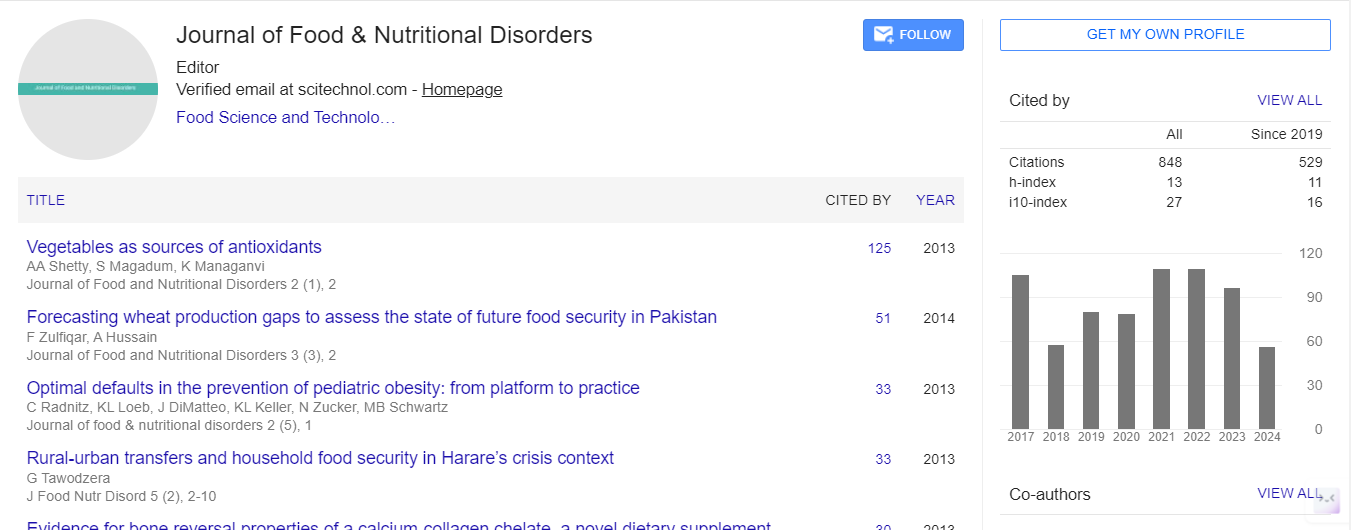Elemental, phytochemical and proximate analysis of Solanum americanum Mill. (Solanaceae) leaves consumed in Bali, Taraba State, Nigeria: Assessment of nutritional value.
Imohiosen Ojeaga
Federal Polytechnic Bali, Nigeria
: J Food Nutr Disor
Abstract
Solanum americanum is a vegetable as well as medicinal plant belonging to the family Solanaceae. The leaves of Solanum americanum were studied for their mineral (elemental), phytochemical and proximate (nutrient) constituents. All analyses were done using standard analytical procedures. Mineral composition was determined by ashing method using furnace at 550°C and the ash obtained was dissolved in dilute hydrochloric acid. Sodium, potassium and calcium were determined using flame photometric methods and iron was determined using UV spectrophotometer. For proximate analysis, the moisture content was determined by oven drying method and protein content was determined using the micro-Kjeldahl method. Neutralization and dry method was used for crude fiber determination and crude lipid was determined using cold extraction method. The phytochemical constituents, saponins, phytates, flavonoids, alkaloids and oxalates were determined using titrimetric methods while tannins were determined by spectrophotometric method. The results obtained showed a moisture content, ash content, crude fibre, crude lipids, crude protein and carbohydrates of 19.98%, 5.71%, 8.18%, 5.49%, 8.36% and 52.28% respectively. The mineral (elemental) analysis showed the presence of iron, calcium, potassium, sodium, in that order of decreasing concentration of 50.18 mg/L, 2.92 mg/L, 1.58 mg/L and 0.50 mg/L. The phytochemical constituents showed tannins, saponins, phytates, flavonoids, alkaloids and oxalates of 0.40 mg/100g, 0.46 mg/100g, 0.97 mg/100g, 1.02 mg/100g, 1.83 mg/100g and 76.85 mg/100g respectively. From the results, it could be concluded that the leaves of Solanum americanum contain some beneficial nutrients, mineral elements and secondary metabolites justifying the medicinal status and possible potency of the plant parts. Assessing the results, the plant is nutritive despite the presence of some anti-nutritive components like tannins, saponins, phytates, flavonoids, alkaloids and oxalates.
 Spanish
Spanish  Chinese
Chinese  Russian
Russian  German
German  French
French  Japanese
Japanese  Portuguese
Portuguese  Hindi
Hindi 
